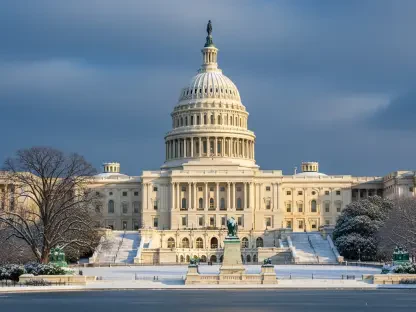The Trump administration’s wide-ranging initiative to repeal or modify numerous healthcare and other regulations has ignited significant legal and political debates, particularly regarding the longevity and legitimacy of these changes. This ambitious move follows President Trump’s memorandum authorizing agency heads, including those within the Department of Health and Human Services (HHS), to start vacating regulations they deem unlawful or beyond the agency’s authority. This directive aligns with the administration’s strategy of limiting federal agency power and shifting regulatory practices, influenced by recent Supreme Court rulings.
Impact of Recent Supreme Court Rulings
Central to the Trump administration’s regulatory rollback is the reversal of principles from the Chevron doctrine, a pivotal 1984 Supreme Court decision. The Chevron doctrine required courts to defer significantly to federal agencies’ reasonable interpretations of ambiguous laws. President Trump’s strategy cites modern Supreme Court decisions that redefine the constitutional limits of agency authority and re-establish checks on perceived unlawful actions. The administration underscores Supreme Court rulings such as West Virginia v. EPA, SEC v. Jarkesy, and others, which have imposed new constraints on agency powers and mandated greater judicial scrutiny of regulatory actions.
This effort includes invoking the “good cause” exception from the Administrative Procedure Act to expedite the repeal of regulations without public notice and comment periods. By bypassing traditional procedural requirements, the administration aims to hasten the removal of regulations it considers excessive. Legislative directives from previous years, including a February 2023 executive order, have tasked agency heads with identifying and prioritizing the elimination of regulations that conflict with the contemporary legal landscape and Supreme Court mandates.
Legal and Procedural Challenges
However, the administration’s accelerated approach to regulation cutting without the usual notice and comment period presents substantial legal challenges. Critics argue that bypassing established procedural requirements undermines the procedural fairness that administrative law seeks to ensure. Legal experts caution that the short-term gains achieved from rapid regulatory annulments may trigger long-lasting litigation. The precedent of using the “good cause” exception could be contested in courts, leading to a potential judicial reversal or significant delay in implementing the administration’s policy goals.
The cases such as Michigan v. EPA, Sackett v. EPA, and Ohio v. EPA illustrate the judicial scrutiny over regulatory practices. These decisions have emphasized that any attempt to sidestep comprehensive review and public participation may not withstand legal challenges, reinforcing the need for transparency and adherence to procedural norms. Further complicating the landscape, legal scholars indicate that the judiciary’s evolving stance on agency deference might lead to a complex and extended litigation process, calling into question the durability of the Trump administration’s regulatory rollback endeavors.
Future Considerations and Implications
The Trump administration’s comprehensive effort to repeal or amend numerous healthcare and other regulations has sparked significant legal and political debates, particularly concerning the durability and validity of these changes. This ambitious initiative follows President Trump’s memorandum that authorized agency heads, including those in the Department of Health and Human Services (HHS), to begin vacating regulations they find unlawful or beyond their authority. This directive aligns with the administration’s broader strategy to limit federal agency power and reshape regulatory practices, inspired by recent Supreme Court decisions. The administration’s approach aims to reduce federal oversight, thereby returning more power to state and local governments, and potentially encouraging innovation and efficiency. However, critics argue that this move undermines longstanding protections and could lead to regulatory chaos. These debates underscore the broader tension between federal oversight and states’ rights, a persistent theme in American governance.









